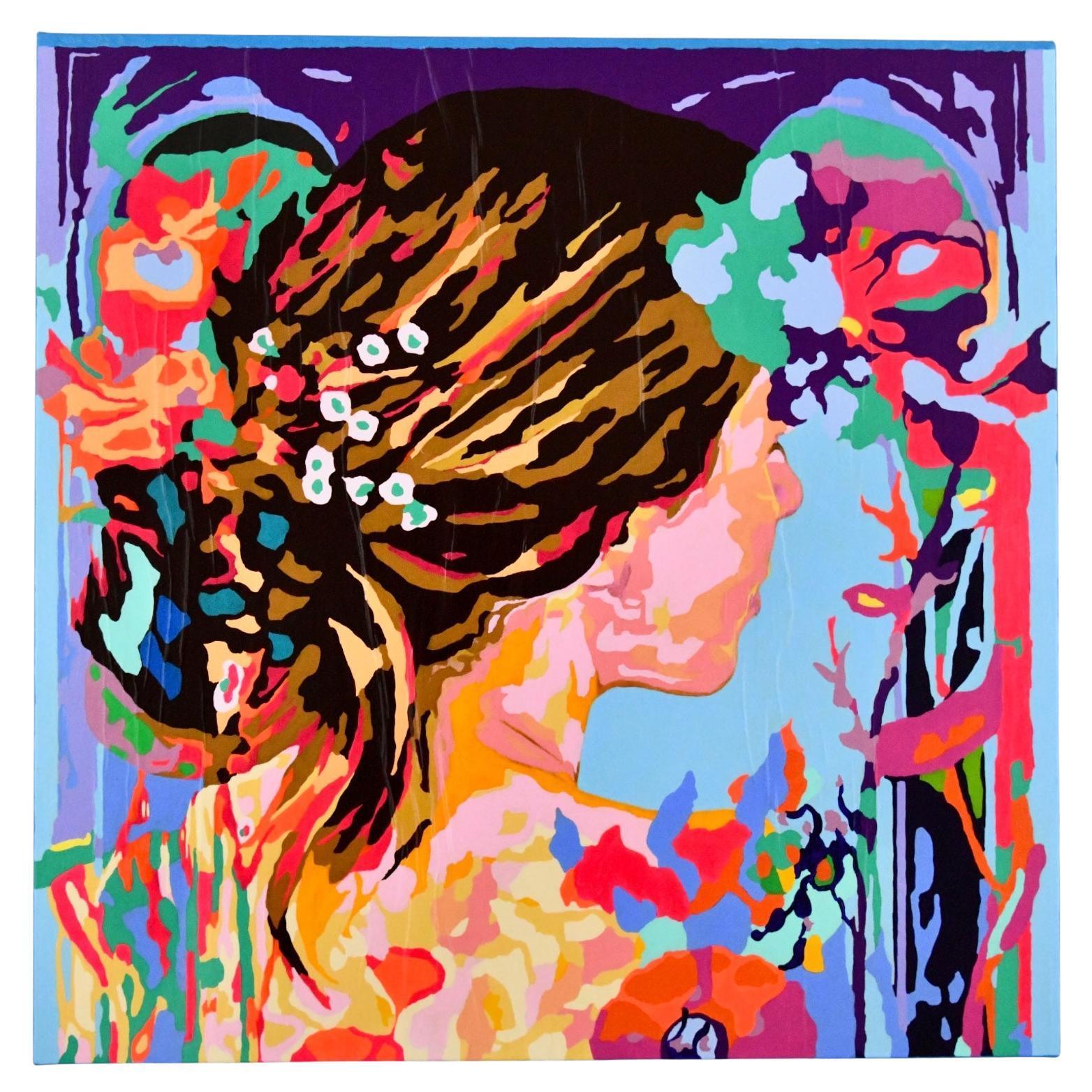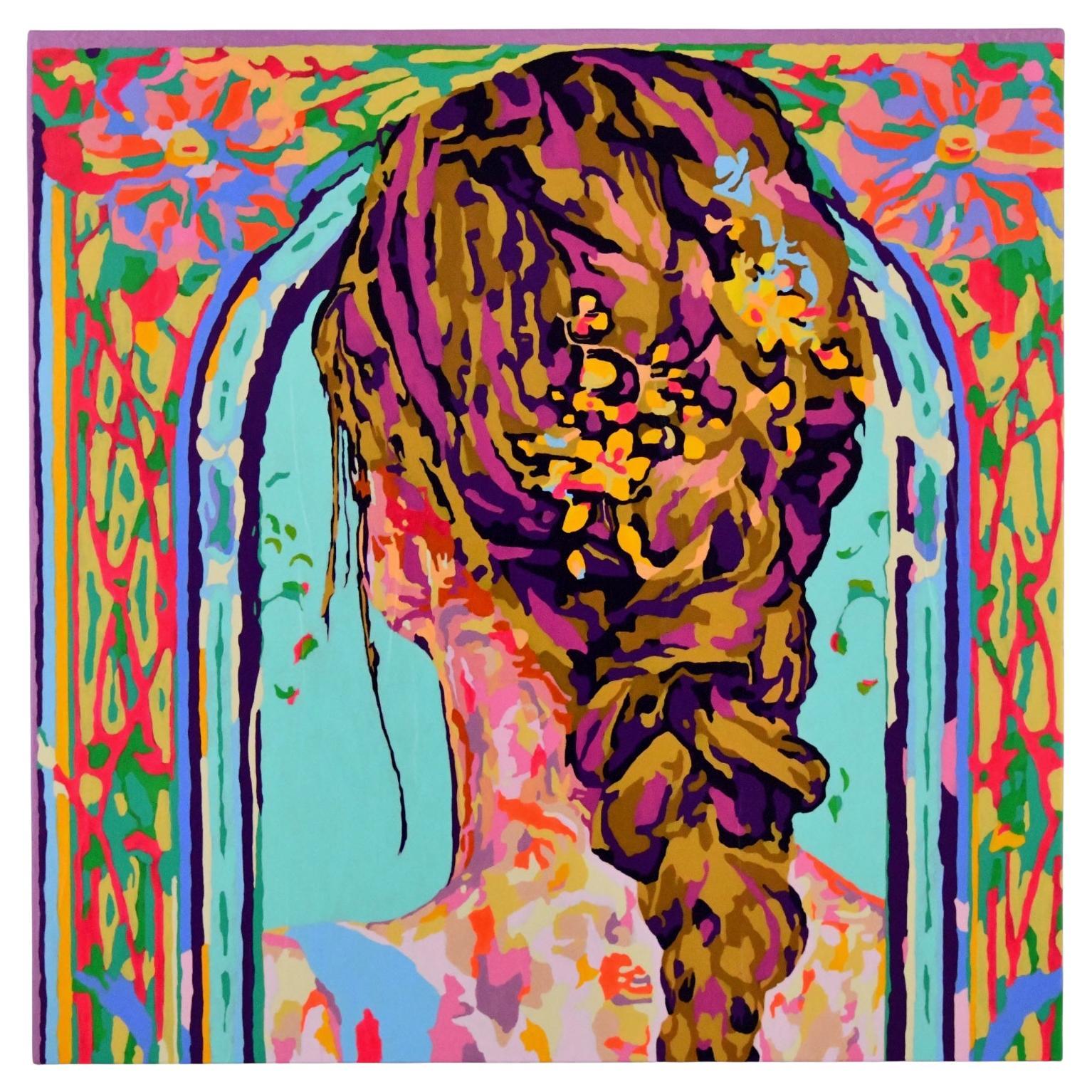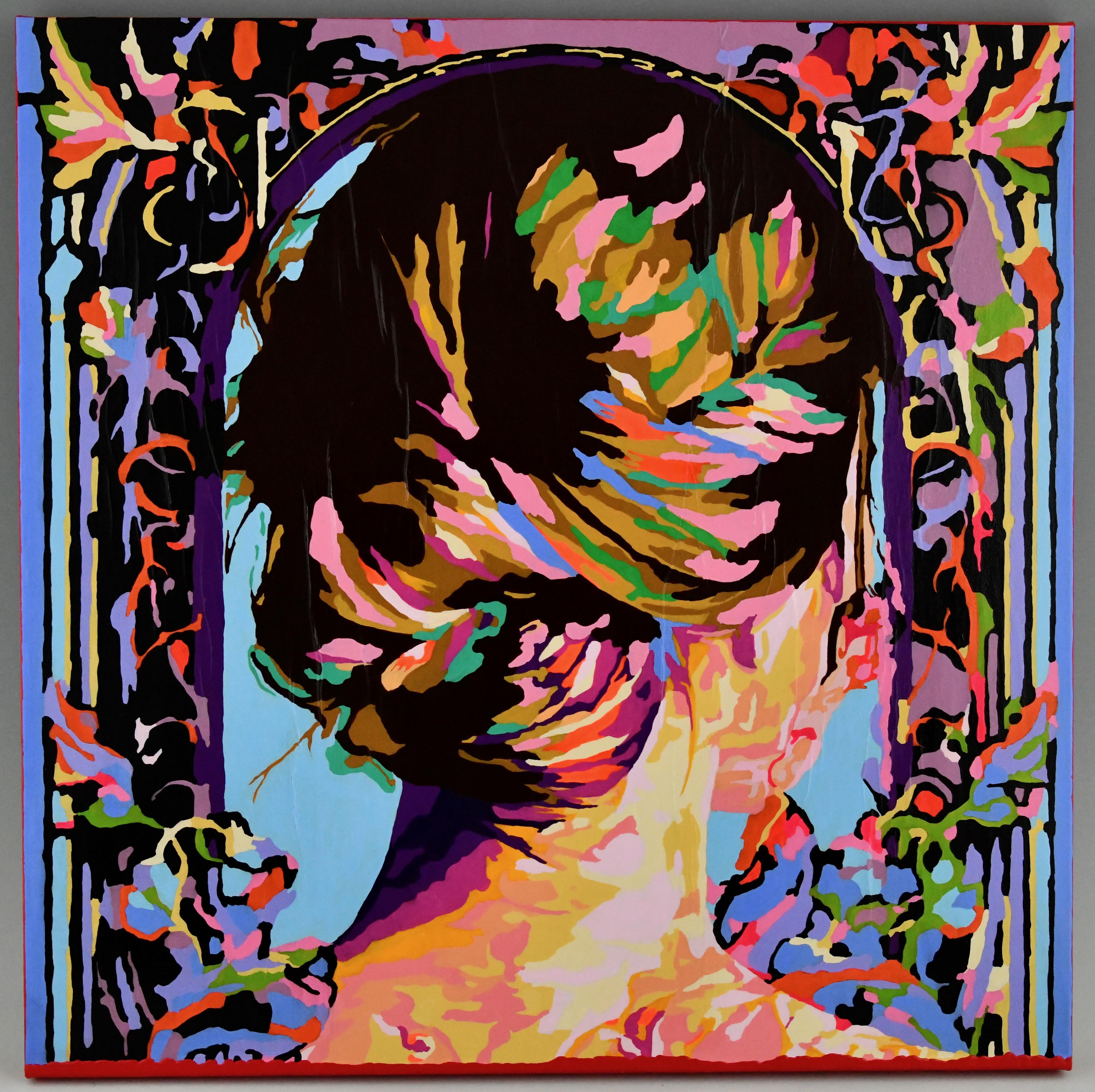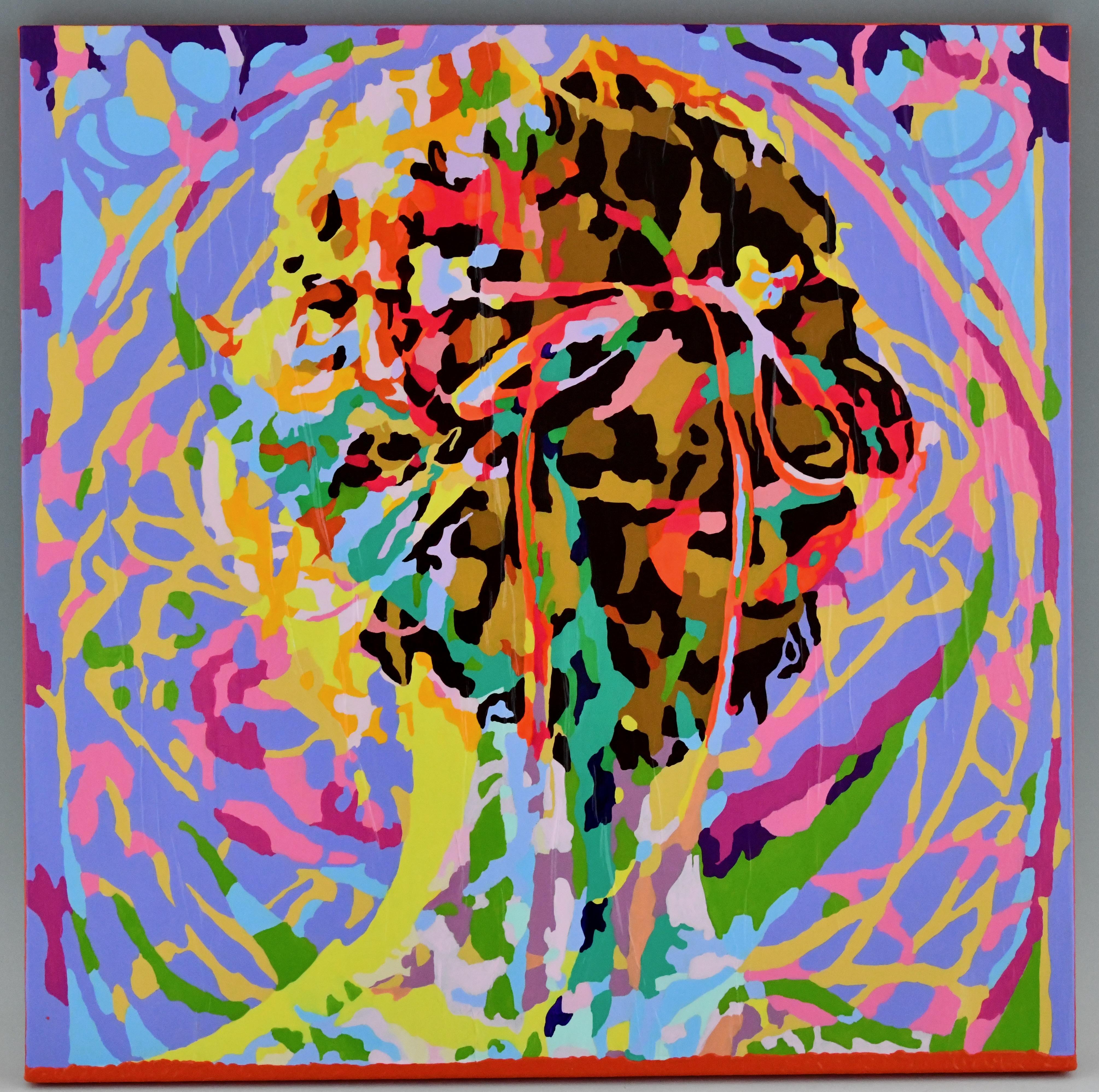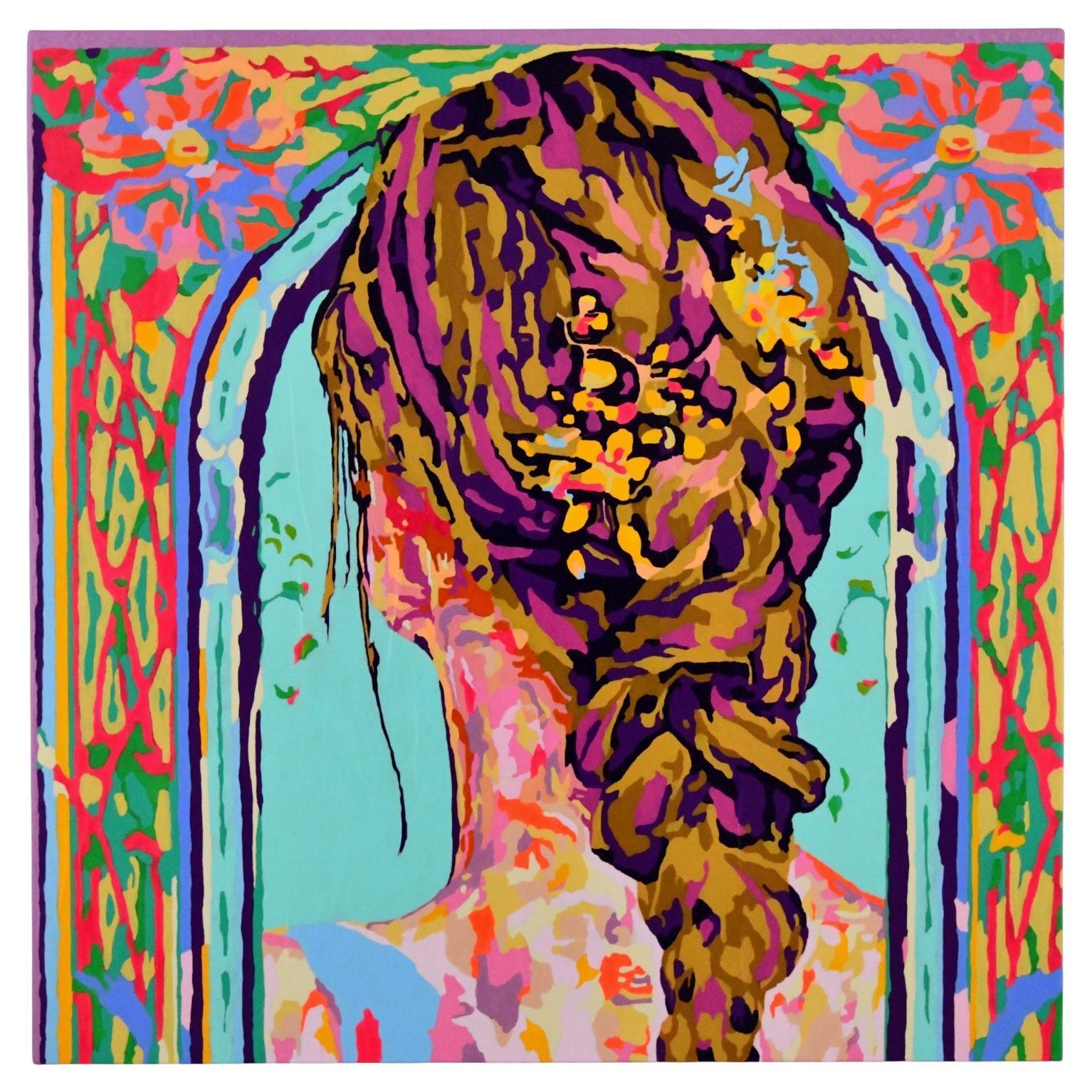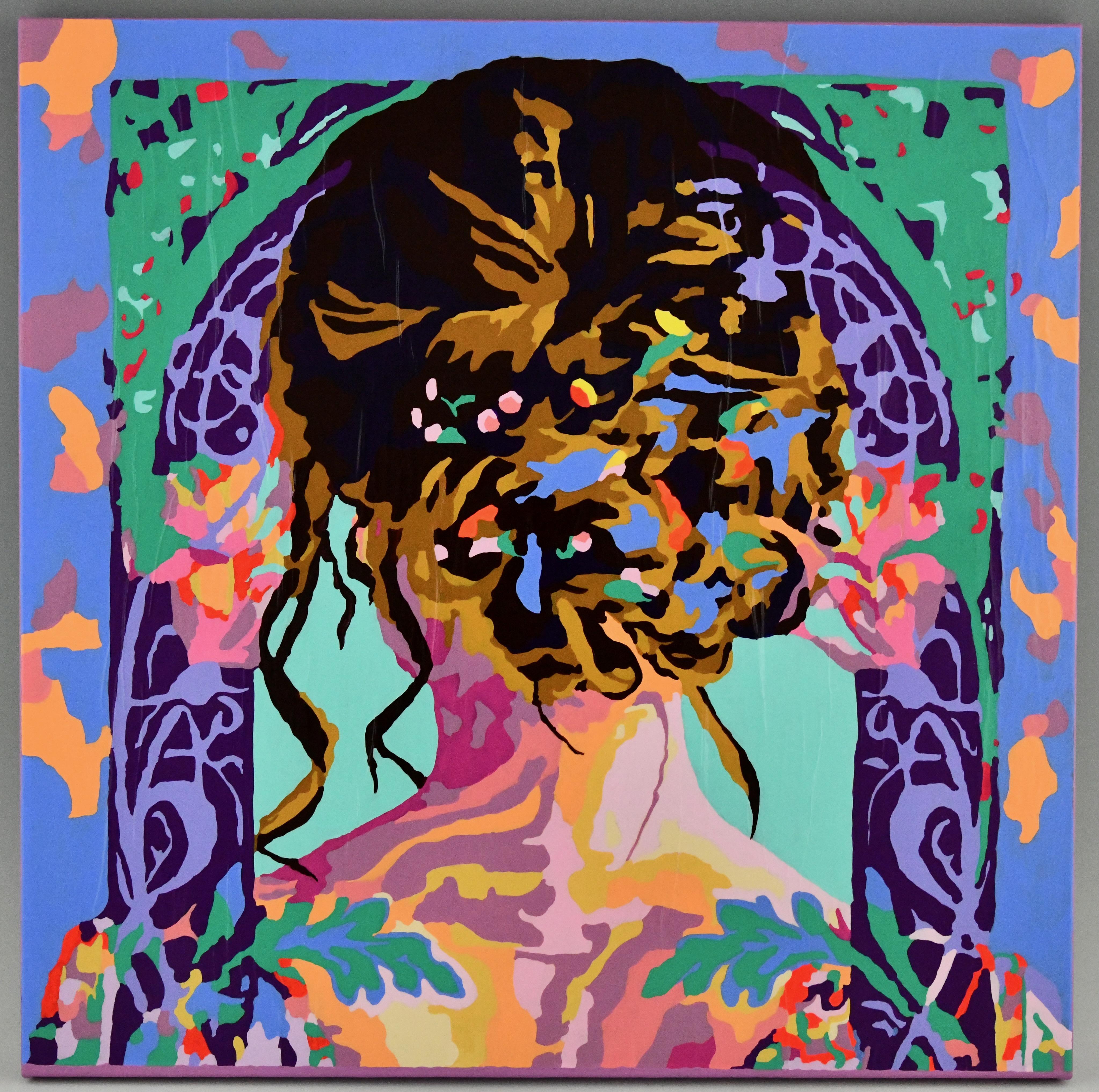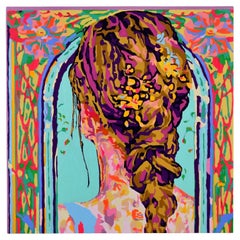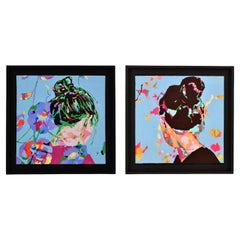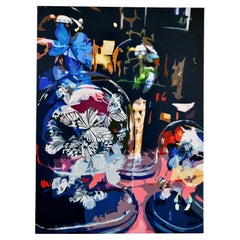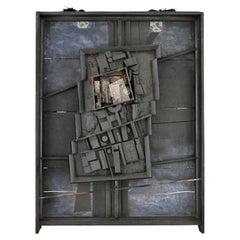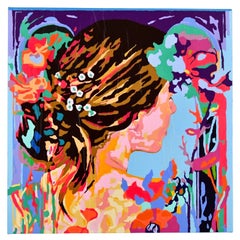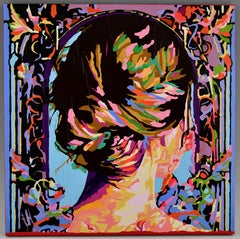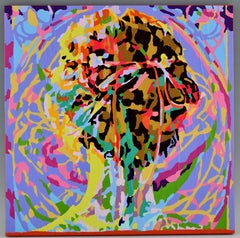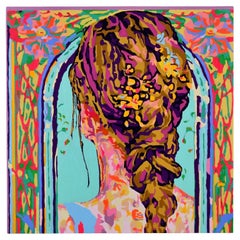Items Similar to Painting Regarde moi by Frédérique Tristant France 2024 Mixed media.
Want more images or videos?
Request additional images or videos from the seller
1 of 5
Painting Regarde moi by Frédérique Tristant France 2024 Mixed media.
$2,334.49
£1,722.05
€1,950
CA$3,234.55
A$3,509.98
CHF 1,859.98
MX$43,048.24
NOK 23,017.14
SEK 21,749.98
DKK 14,848.88
About the Item
Painting Regarde moi by Frédérique Tristant.
Mixed media on canvas. France 2024.
Frédérique Tristant is a French artist born in Vannes in 1971, who lives and works in Brittany in Morbihan.
In gallery since 2018, Frédérique TRISTANT is both a specialist in semiotics, holder of a doctorate from the University of Bordeaux, and a painter whose training has been validated by a CAPES.
This dual training permeates her work, offering beyond its graphic aspect, a reflection on the nature of representation resulting from the university course on the image of bodies through the tools of reproduction (photographs, videos) and investigation scientific (radiology, scanner, MRI etc.).
From this reflection, she seeks the limit, the tension between the physical reality of skins and bodies and the dreamlike vision offered by representation: subtle recreation of this reality in a two-dimensional space materialized by a few pictorial layers finer than the epidermis.
She explains:
“As in my research on the first photographic atlas of dermatology by Dr. Hardy and Montmeja in 1868, I retouch each portrait with watercolor and acrylic paint. I appropriate a physiognomy that I reshape and remake as I wish. I refine my masks which tell women's stories like the diary of our melancholy, our absences and our sensuality”
- Creator:Frédérique Tristant (Artist)
- Dimensions:Height: 23.63 in (60 cm)Width: 23.63 in (60 cm)Depth: 1.19 in (3 cm)
- Style:Modern (In the Style Of)
- Materials and Techniques:
- Place of Origin:
- Period:
- Date of Manufacture:2024
- Production Type:New & Custom(One of a Kind)
- Estimated Production Time:Available Now
- Condition:
- Seller Location:Antwerp, BE
- Reference Number:1stDibs: LU931042603552
About the Seller
5.0
Gold Seller
Premium sellers maintaining a 4.3+ rating and 24-hour response times
Established in 1988
1stDibs seller since 2012
493 sales on 1stDibs
Typical response time: 2 hours
Associations
International Confederation of Art and Antique Dealers' AssociationsLAPADA - The Association of Arts & Antiques Dealers
- ShippingRetrieving quote...Shipping from: Antwerp, Belgium
- Return Policy
Authenticity Guarantee
In the unlikely event there’s an issue with an item’s authenticity, contact us within 1 year for a full refund. DetailsMoney-Back Guarantee
If your item is not as described, is damaged in transit, or does not arrive, contact us within 7 days for a full refund. Details24-Hour Cancellation
You have a 24-hour grace period in which to reconsider your purchase, with no questions asked.Vetted Professional Sellers
Our world-class sellers must adhere to strict standards for service and quality, maintaining the integrity of our listings.Price-Match Guarantee
If you find that a seller listed the same item for a lower price elsewhere, we’ll match it.Trusted Global Delivery
Our best-in-class carrier network provides specialized shipping options worldwide, including custom delivery.More From This Seller
View AllPainting La Tresse Frédérique Tristant France 2024 Mixed media.
By Frédérique Tristant
Located in Antwerp, BE
Painting La Tresse by Frédérique Tristant.
Mixed media on canvas. France 2024.
Frédérique Tristant is a French artist born in Vannes in 1971, who lives and works in Brittany in Mo...
Category
2010s French Modern Paintings
Materials
Paint
Pair of paintings Violette & Capucine by Frédérique Tristant.
By Frédérique Tristant
Located in Antwerp, BE
Pair of paintings Violette & Capucine by Frédérique Tristant.
Mixed media on canvas. France 2024.
Also separately available.
Frédérique Tristant is a French artist born in Vannes...
Category
2010s French Modern Paintings
Materials
Paint
Painting butterflies LES PAPILLONS by Carole Grandgirard, France 2024.
By Carole Grandgirard
Located in Antwerp, BE
Painting butterflies LES PAPILLONS.
By Carole Grandgirard, title and signature on the back of the canvas.
Oil on canvas.
Contemporary, France 2024.
Carole Grandgirard is a French ...
Category
2010s French Modern Contemporary Art
Materials
Canvas
Mid Century Recycled Artwork by André Pailler France 1970
Located in Antwerp, BE
Mid Century recycled artwork by Andre Pailler. France ca. 1970. Mixed media, black and blue grey paint. Recycled items, plexiglass, wood.
Category
Vintage 1970s French Mid-Century Modern Paintings
Materials
Wood
Mid Century Recycled Artwork by André Pailler Title First Snow, 1970, France
Located in Antwerp, BE
Title: Première neige or First snow.
Mid Century recycled artwork by Andre Pailler. France ca. 1970.
Mixed media? Recycled items, rope, cardboard, na...
Category
Vintage 1970s French Mid-Century Modern Paintings
Materials
Wood
Midcentury Abstract Painting with Plexiglass André Pailler, 1970
Located in Antwerp, BE
Midcentury abstract painting with paper and plexiglass collage artwork by the artist André Pailler. France, 1970.
We bought several works of this artist...
Category
Vintage 1970s French Mid-Century Modern Paintings
Materials
Paint
You May Also Like
Painting Regarde moi by Frédérique Tristant France 2024 Mixed media.
By Frédérique Tristant
Located in Antwerp, BE
Painting Regarde moi by Frédérique Tristant.
Mixed media on canvas. France 2024.
Frédérique Tristant is a French artist born in Vannes in 1971, who lives and works in Brittany in ...
Category
2010s Modern Figurative Paintings
Materials
Paint
Painting La Discrète Frédérique Tristant France 2024 Mixed media.
By Frédérique Tristant
Located in Antwerp, BE
Painting La Discrète by Frédérique Tristant.
Mixed media on canvas. France 2024.
Frédérique Tristant is a French artist born in Vannes in 1971, who lives and works in Brittany in ...
Category
2010s Modern Figurative Paintings
Materials
Paint
Painting Le plus beau jour Frédérique Tristant France 2024 Mixed media.
By Frédérique Tristant
Located in Antwerp, BE
Painting Le plus beau jour by Frédérique Tristant.
Mixed media on canvas. France 2024.
Frédérique Tristant is a French artist born in Vannes in 1971, who lives and works in Britta...
Category
2010s Modern Figurative Paintings
Materials
Paint
Painting La Tresse Frédérique Tristant France 2024 Mixed media.
By Frédérique Tristant
Located in Antwerp, BE
Painting La Tresse by Frédérique Tristant.
Mixed media on canvas. France 2024.
Frédérique Tristant is a French artist born in Vannes in 1971, who lives and works in Brittany in Mo...
Category
2010s Modern Figurative Paintings
Materials
Paint
Painting Pour un soir Frédérique Tristant France 2024 Mixed media.
By Frédérique Tristant
Located in Antwerp, BE
Painting Pour un soir by Frédérique Tristant.
Mixed media on canvas. France 2024.
Frédérique Tristant is a French artist born in Vannes in 1971, who lives and works in Brittany in...
Category
2010s Modern Figurative Paintings
Materials
Paint
Painting Femme Fatale Frédérique Tristant France 2024 Mixed media.
By Frédérique Tristant
Located in Antwerp, BE
Painting Femme Fatale by Frédérique Tristant.
Mixed media on canvas. France 2024.
Frédérique Tristant is a French artist born in Vannes in 1971, who lives and works in Brittany in...
Category
2010s Modern Figurative Paintings
Materials
Paint
